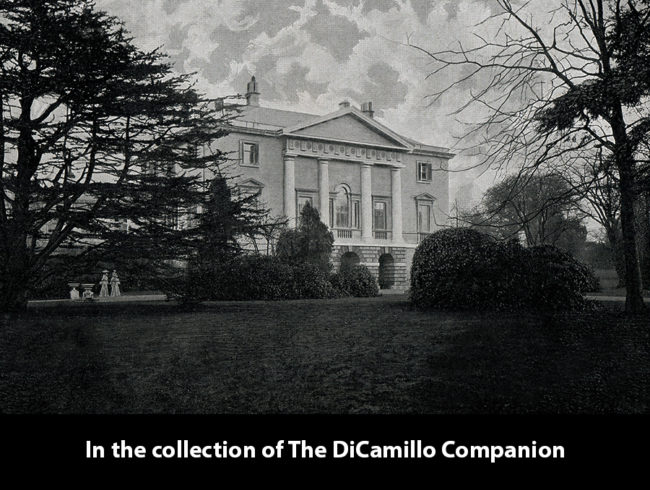
A circa 1896 photo of the House from "The Queen's London"
Built / Designed For: King George II as a hunting lodge, or possibly for his consort, Queen Caroline.
House & Family History: White House first took the name of Stone Lodge, which was later changed to New Lodge, thus distinguishing it from its neighbor, Old Lodge, which was demolished between 1839 and 1841. New Lodge became a favorite resort of the king's consort, Queen Caroline, who died in 1737. In 1751, her youngest daughter, Princess Amelia, succeeded to the rangership of Richmond Park on the death of Robert, Lord Walpole, the son of the prime minister. She regarded the area as private territory and, shortly after taking up her appointment, gave orders for it to be closed to the general public, with the exception of a few privileged friends and those fortunate enough to obtain special permits. Attempts to regain free public access to the park reached a climax in the action brought by John Lewis, a Richmond brewer, against one of the Park's gatekeepers who had forcibly refused him entry. The case was eventually heard at the Surrey Assizes in April 1758, when the verdict was passed in favor of Lewis. Thus a right of way for pedestrians across the Park was once again established. It was also during the rangership of Princess Amelia that work was begun in the 1750s on the two flanking wings of New Lodge (a port-cochere was added in 1801). Princess Amelia was succeeded as Ranger by John, Earl of Bute, who lived in new Lodge from 1761 until his death in 1792. The disrepair into which the House was allowed to fall after 1792 was corrected by George III, who, in 1801, presented the property for life to The Rt. Hon. Henry Addington. Addington was created viscount Sidmouth in 1805, the year in which White Lodge was given its own private gardens, later to be landscaped by Humphrey Repton. Lord Sidmouth died at White Lodge in 1844, after which the House was occupied by Princess Mary, Duchess of Gloucester, until her death in 1857. In the spring of the following year it became the home of the prince of Wales (later Edward VII) to study and prepare for a military examination. In 1861, Queen Victoria and Prince Albert stayed at the Lodge, following the death of the queen's mother, the Duchess of Kent; then, in 1869, it was presented to the duke and duchess of Teck, whose home it was to remain for almost 30 years (their daughter, later Queen Mary, grew up here in the 1890s). In 1923, the newly-married duke and duchess of York (the future George VI and Queen Elizabeth) came to live at White Lodge; however, the Lodge presented many problems for the young couple: its upkeep was expensive, it was inconvenient, and totally lacking in privacy. After a few years, the couple gave up the Lodge, and in 1927 it was granted to viscount Lee of Fareham. The last private resident at White Lodge was Colonel James Veitch, who lived there until 1954. In 1955, it was taken over by the Sadlers Wells Ballet Company as its junior school, which was later given the title of the Royal Ballet School, Junior Section.
Architect: Henry Herbert (Pembroke and Montgomery)
Date: 1727Architect: Roger Morris
Date: 1727
Title: Country Life (magazine)
Author: NA
Year Published: NA
Reference: Aug 3, 2000, pg. 89
Publisher: London: Future plc
ISBN: NA
Book Type: Magazine
House Listed: Grade I
Park Listed: Not Listed
Past Seat / Home of: Queen Caroline, wife of King George II, 18th century. John Stuart, 3rd Earl of Bute, 1761-92. Henry Addington, 1st Viscount Sidmouth, 18th-19th centuries. Princess Mary, Duchess of Gloucester, until 1857. Edward, Prince of Wales, later Edward VII, 19th century. Francis, Duke of Teck, 19th century. Duke and Duchess of York, later George VI and Queen Elizabeth, 20th century. Arthur Hamilton Lee, 1st Viscount Lee of Fareham, 20th century. Colonel James Veitch, until 1954.
Current Ownership Type: The Crown / Royal Family
Primary Current Ownership Use: School
Ownership Details: The freehold is held by the Crown Estate and leased to the Royal Ballet School.
House Open to Public: No
Phone: 02078-368-899
Fax: 02083-928-496
Email: [email protected]
Website: https://www.royalballetschool.org.uk
Historic Houses Member: No